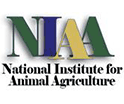
Antibiotics use consistently ranks among top food concerns of U.S. consumers. While most may be unfounded, entities from farm groups to regulatory agencies, continue to promote good antibiotic stewardship and responsible use in food animals.
The latest numbers from the Food and Drug Administration suggest the collaboration is paying off. A December report showed a 33% decrease from 2016 to 2017 in domestic sales and distribution of all medically important antibiotics used in food animal production. This progress suggests that increased understanding of proper antibiotics use is having a positive impact.
“We think some important progress has been made with some strategies that we completed in January 2017, where we worked with the pharmaceutical industry, animal producer groups, the feed industry and the veterinary community to bring about some changes to how medically important antibiotics are used in animal agriculture,” said Bill Flynn, deputy director for science policy for the Food and Drug Administration Center for Veterinary Medicine.
The FDA plans to continue that momentum in its five-year plan to reduce antibiotic resistance, taking what Flynn calls a “One Health” approach. He spoke at the National Institute for Animal Agriculture’s Antibiotics Symposium last fall.
“We are sort of broadening the scope a bit,” Flynn said. “I think the efforts we’ve focused on to date have been largely focused on antibiotics used in the animal agriculture setting, in food-producing animals. There’s general agreement that this really is a One Health issue, we need to look at this issue of antimicrobial resistance through a One Health lens, because it really is contributed by uses in all different sectors, whether it’s human health care or any animal health area where antibiotics are being used. One of the things we’ve included in this five-year plan is also turning our attention to pets, or companion animals.”
The agency’s plans also call for improvements in how antibiotic use and resistance are monitored for livestock and companion animals.
“Clearly the challenge here is that it isn’t just an animal issue, it’s a human issue,” Flynn said. “It’s an issue where all antibiotics are being used. Many of us have pets at home, we have a lot of close contact with our pets. Our pets get sick, our pets need to be treated with antibiotics but there are risks that resistance can emerge in your pet.”
You can hear more from Flynn during the National Institute for Animal Agriculture’s Antibiotic Symposium this fall. It takes place Oct. 15-17 at Iowa State University in Ames, Iowa. Visit animalagriculture.org to learn more or to register.
NIAA and Merck Animal Health are committed to a One Health approach in the fight against antimicrobial resistance.
About One Health:
The One Health series is brought to you by the National Institute for Animal Agriculture (NIAA) with leadership and technical support from Merck Animal Health. NIAA and Merck Animal Health are committed to understanding and finding solutions to antimicrobial resistance from animal health, human health and environmental perspectives. The One Health initiative is a collaborative effort between leaders in each of these areas and includes outreach to inform both consumers and producers. The goal: Responsible antibiotics use.
About NIAA:
The National Institute for Animal Agriculture (NIAA) was established to derive solutions on the most current issues in animal agriculture. Its members include producers, veterinarians, scientists, and government and allied industry representatives. NIAA is dedicated to programs that work toward the eradication of diseases that pose a risk to the health of animals, wildlife and humans. It also promotes a safe and wholesome food supply and best practices for animal health and well-being as well as environmental stewardship. More information is available at animalagriculture.org.


